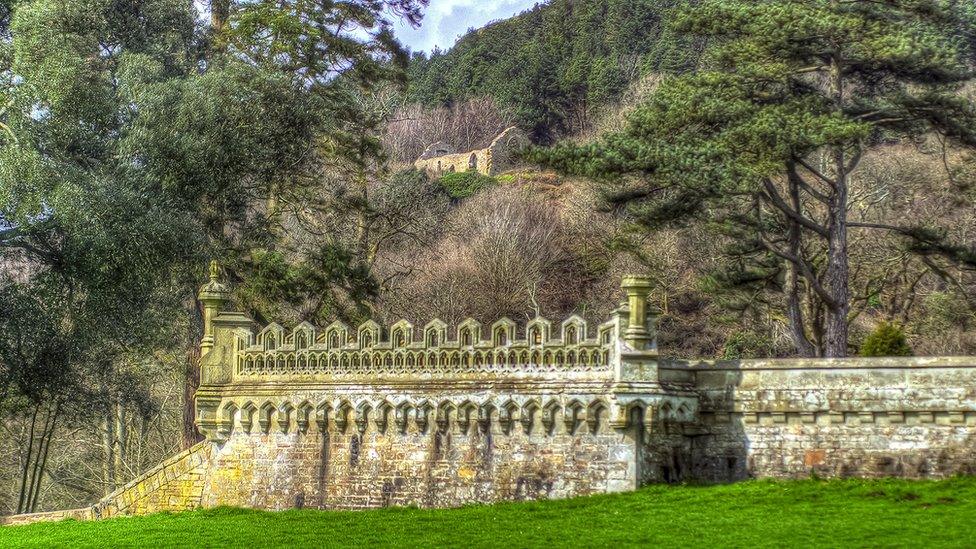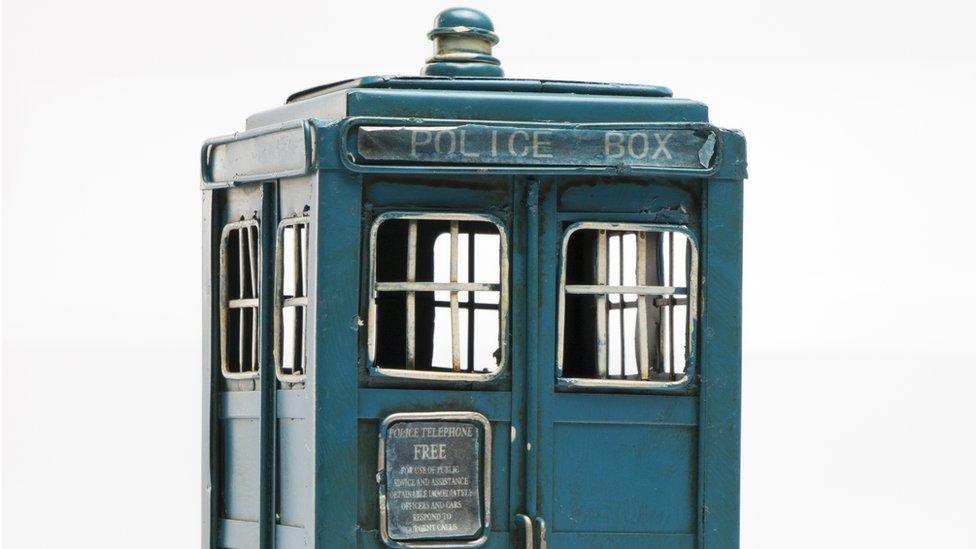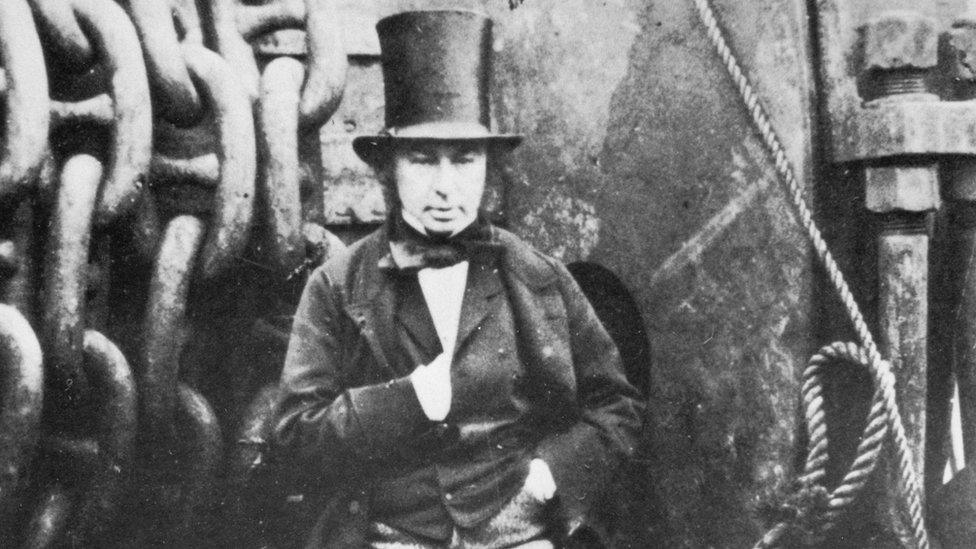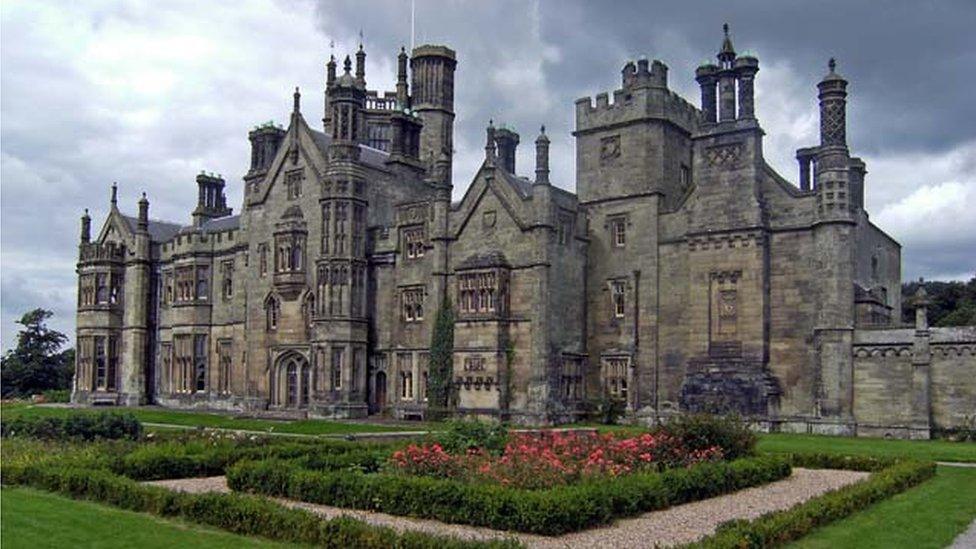Margam Park: Food on the land that helped shape history
- Published
What history lies inside Margam Country Park?
In two-and-a-half millennia, Margam Park and the people who have lived there have played prominent roles in British history.
From an Iron Age settlement around 500BC it developed into a 12th Century Cistercian Abbey and the seat of Norman power in south Wales.
It was then owned by wealthy landowners, before World War Two soldiers were based there.
While it has helped shape the course of history, a very different type of course will be the focus this weekend.
Visitors will be able to make their own gin and enjoy culinary delights, external as the park hosts the Great British Food Festival.
But what would guests over the centuries - including Admiral Lord Nelson, Isambard Kingdom Brunel and a certain time lord - have enjoyed?
"If I were to jump in my Tardis to throw a dinner party for a group of Margam Park Iron Age hill fort dwellers, I would be preparing dishes that wouldn't look out of place on one of today's trendy street food menus," said food historian Seren Charrington-Hollins.
"I might choose to prepare oatcakes and bean fritters or perhaps clay-baked birds or wild boar stew."

Margam Park has welcomed many very important guests over the years
It was in 1147 that Margam Park's modern history began, when Robert, Earl of Gloucester donated 55,000 acres (22,250 hectares) to form a daughter house to the Cistercian Clairvaux Abbey in France.
The new monastery would serve a political as well as spiritual purpose, according to secretary of the Friends of Margam Park, Gareth Elms.
"Sheep farming on the abbey's land was so extensive that it required vast amounts of native Welsh labour, helping to bridge divides with their Norman overlords.
"The wool, which was exported to modern-day Belgium, was known as one of the finest in the world, which not only made the abbey fantastically wealthy, it also helped the Normans exert soft power over the locals," he said.
Because they were making money, they were not uprising, said Mr Elms, adding: "Funding a monastery was a lot cheaper than building a castle and garrisoning soldiers."
With an abundance of wealth, the Cistercian monks would dine well after a day sheep shearing.

From the past to the future: The Tardis arrived at the park for the filming of Doctor Who
Ms Charrington-Hollins said: "After all that heavy work I'd tell them to unwind with a bottle of Côtes du Rhône.
"I'd throw together a cheese board, or perhaps I'd whip up a savoury tart containing soft cheese and cinnamon followed by honey cakes."
Most of the abbey was demolished when Sir Rice Mansel purchased the estate from King Henry VIII in the 1500s.
The dynasty he established became as wealthy as the monks before them and produced some of the UK's most powerful politicians.
Of the eight generations, Christopher Rice Mansel Talbot, who lived between 1803 and 1890, was perhaps the most prominent.
He built the park's Tudor neo-Gothic "castle" on the site, a luxury mansion which had 29 bedrooms but just one bathroom.
However, he was to leave an even bigger mark on the world.
From the 1830s, he began to exploit the mineral wealth of his land, with coal and iron extraction transforming the landscape and helping to power the industrial revolution.
Mr Elms said: "For his time, Christopher was a progressive Liberal MP but he was also a ruthless and genius businessman.
"When he died he was reputed to be the richest man in Britain outside the nobility.
"His trick was to let others take the risk, leasing his land to prospectors and charging them per ton mined and even to cross his property."
Mr Elms said he "revolutionised our landscapes and way of life forever", adding: "Funding railways throughout Wales, establishing our earliest coal mines and iron works, and transforming Aberavon harbour into the port which gives the town its name."

Isambard Kingdom Brunel designed ships, railways, bridges and tunnels - among other things
Given the calibre of his guests, Ms Charrington-Hollins described the pressure being "really on" in terms of producing meals.
She said: "With Admiral Lord Nelson and Lady Hamilton, as well as Isambard Kingdom Brunel coming to dinner, I'd better get in the kitchen because I have eight courses to prepare, starting with soup accompanied by sherry, swiftly followed by a fish course served with a good white wine.
"For entree I will be serving mutton cutlets with claret, but won't have much time to enjoy them myself, as now it's time for the relevé - the most substantial part of the dinner."
Following would be beef pie in a rich burgundy sauce, served with potatoes and seasonal vegetables.
Then the roast game would be served, with Ms Charrington-Hollins suggesting she would produce roast snipe or wild duck.
Film stars
"As the claret is swigged, does anyone have room for entremets?" she asked.
"We have dressed asparagus, devilled sardines and a fine cherry tart, before we conclude the meal with fruit, nuts and port."
By 1941 the family's fortunes had changed and all the contents of the castle were sold off, from curtains and furniture to valuable paintings.
Their place was taken by American servicemen in training for D-Day and then actors as the park was used as a backdrop for TV and film.
In 2007, David Tennant's Doctor Who paid a visit, and more recently it was the setting for Fox TV's Da Vinci's Demons and Apostle by Netflix.
"No sooner am I cracking open the tinned bacon and beans for the GIs when I'm now faced with the question of 'what do you serve a time lord?'
"Well, I think I'll see if he fancies a slice of blue velvet cake, washed down with some colour changing cocktails," said Ms Charrington-Hollins.

This piece was inspired by a question from a reader.
If you have any questions we can turn into stories, use this form to send them in:
If you are reading this page on the BBC News app, you will need to visit the mobile version of the BBC website to submit your question on this topic.
We may get in touch if we decide to follow up on your suggestion.
- Published26 November 2017

- Published26 May 2017
